There are things in this world which are known more or less universally. This is basically a good thing since it provides common grounds. Especially if the object of common knowledge is a young woman with a friendly smile.
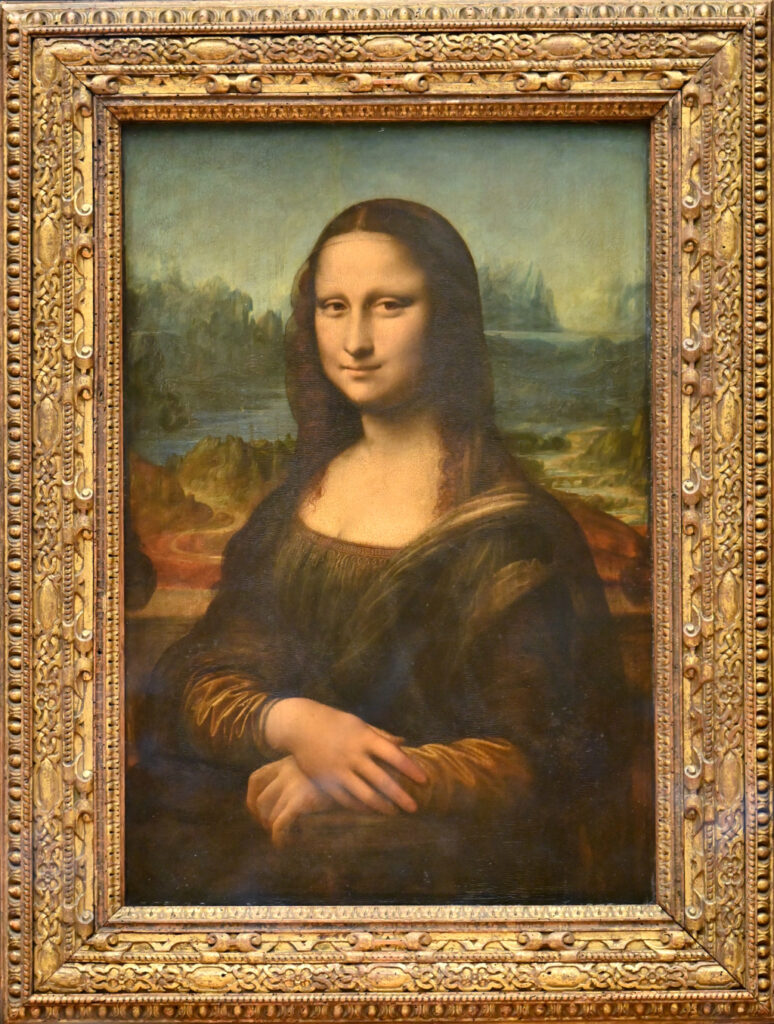
Let me be clear at the outset: I am in no way an art historian. I know that this painting is attributed to Leonardo da Vinci and there are a lots of stories around who the girl actually is. (Although the wise guys at Louvre seem to be quite sure that this is a portrait of Lisa Gherardini. At wikipedia she is called Lisa del Giocondo and the editors there take a more careful stand about her relation to the painting.) But this is not my topic here. I am hunting for Mona’s variability. I would dare to call it even flexibility. She can do the weirdest things and still keep her charm and most of her dignity.
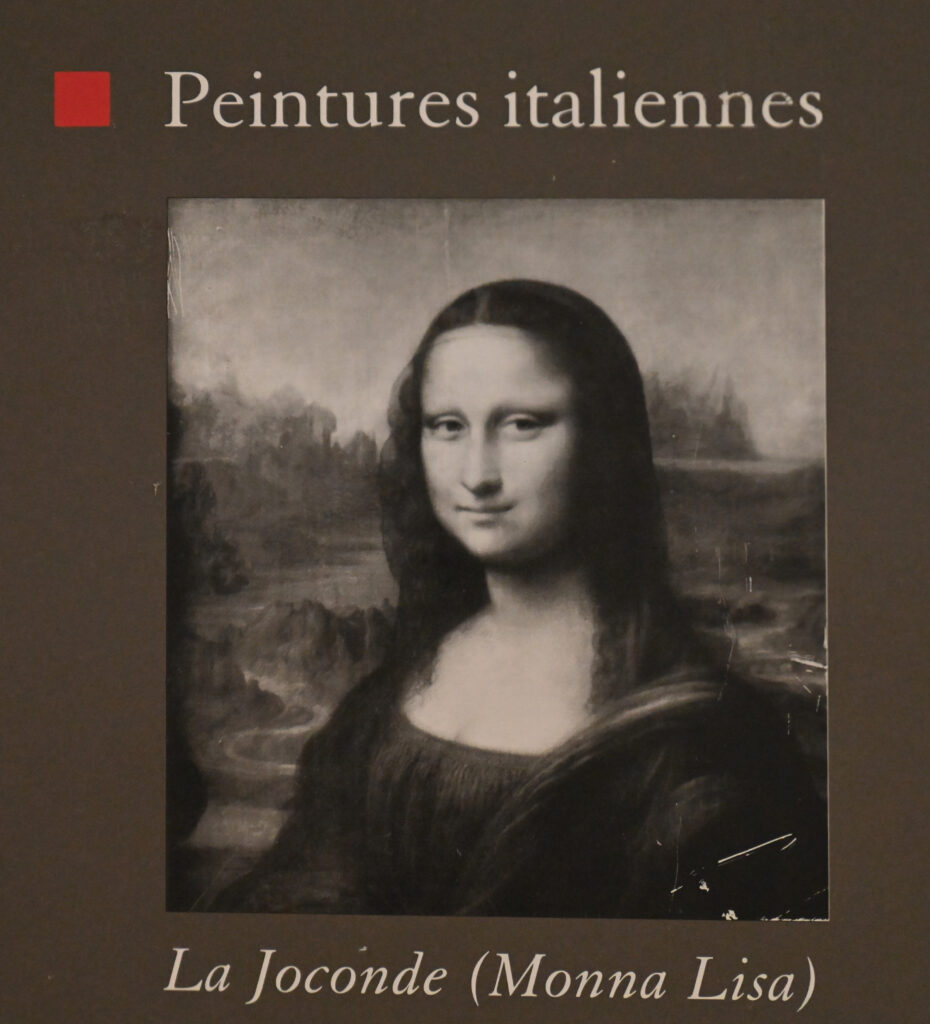
Before I dive deep into the details let us have a closer look at her name. I had the impression that the painting is universally called Mona Lisa. Well, wrong. At home (her home, Italy) she is called Monna Lisa, with two n. Not a typo but probably closer to the name (or title) from which the chummy Mona is derived: Madonna. And in her current domicile it’s La Joconde. No idea why, as mentioned above I’m not the art historian type of guy. Although thinking about it twice, Joconde sounds remotely similar to Giocondo – you remember, the wikipedia-version of Gherardini. OK, this starts to sound confusing. I run the risk of entering the writing modality you would expect from an art historian – which I… OK, you already got that, sorry.
So, variability and flexibility. I like to start with some impressions from her current surroundings, the Louvre. Already in the entrance hall below the glass pyramid she smiles at us. Her companion-on-stage at the left is a good match. Again a friendly young woman, just from another cultural setting. Although the far east beauty conveys a more severe undertone. Her companion on the right hand side is a different story. A somehow unhealthy chest-to-belly size ratio combines unfavorably with his long face. He remotely reminds me of Anton Ego from Pixar’s Ratatouille. And Mona, does she look troubled or unsettled? Not at all, she gives him a cool shoulder and smiles on.
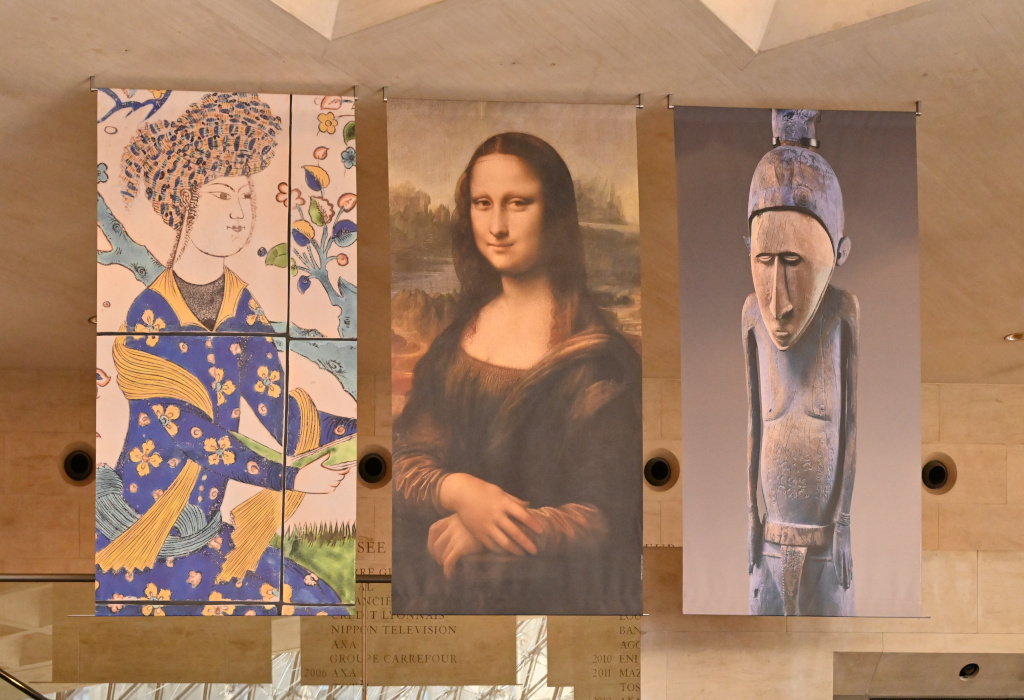
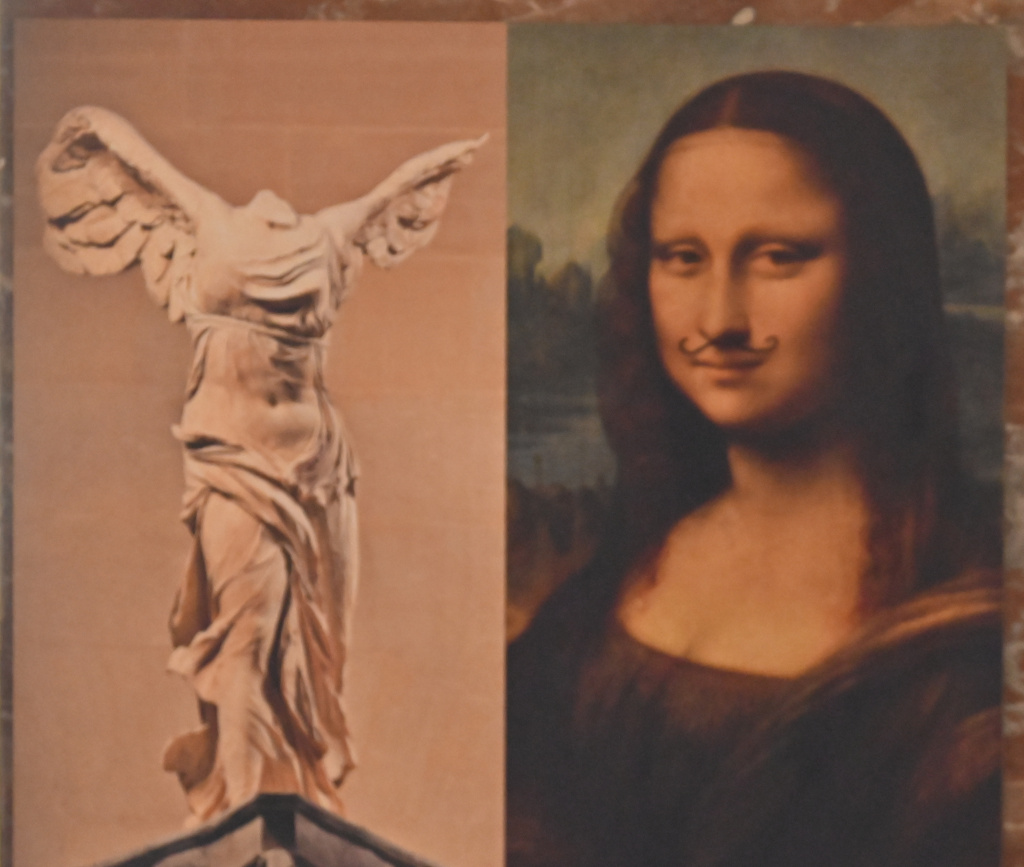
We stay in the holly halls of Louvre. We all know the stereotypical picture of a boring visit in a dusty museum. The Louvre is different for many reasons. For example the audio guides are based on heavily modded Nintendo 3DS and although there are no Nintendo classic available you can use it for a playful approach to great art. Choose a random piece from the database and let the 3DS guide your there. Chances are good that you find parts of the Louvre you never before set a foot on. During one of these trips into the unknown I stumbled over a slightly modified sign (as usually pointing to the major attractions). No one should say that museum visitors don’t have a sense of humor. And Mona takes it very well without any sign of anger or outrage. And I didn’t see any dust, there must be a battalion dusting workers.
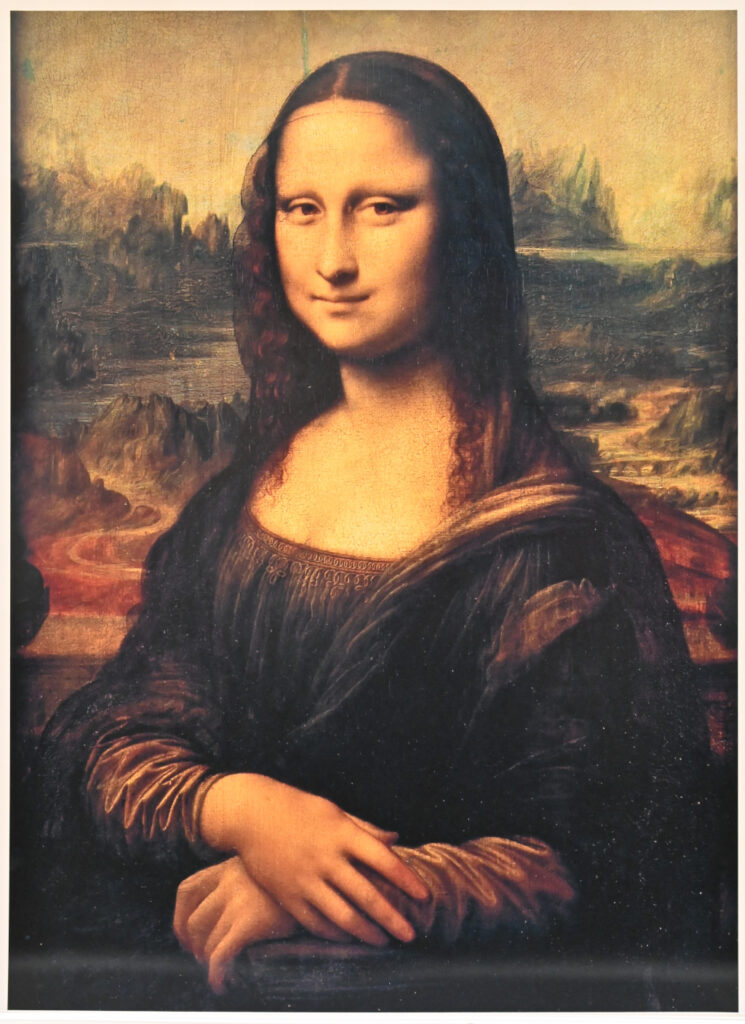
We leave the museum and start to collect impressions from the outside world. Our first stop is a must for every class-A tourist: An overcrowded tiny shop on the not at all slippery slopes of Montmartre, filled with Eiffel towers (5cm up to about 30cm, optionally illuminated in RGB or white, with silver, gold or bronze finish), clothing, umbrellas, coffee cups and posters. You guess ist: Mona is in the first row. Her yellowish tint is stronger up here although the original has some troubles with neutral white balance too. By the way, if you wanna see Mona with brighter, more natural colors and finer details the Prado is the place to go… Some water stains on the top edge and a cyan streak in the sky give an idea how hard the day can be in a location like this. A solid, stoic attitude helps in these circumstances. You learn this in more than 400 years in challenging locations like Napoleon’s bedroom, rolled up inside a hole in the wall or in a watertight, unsinkable chest.
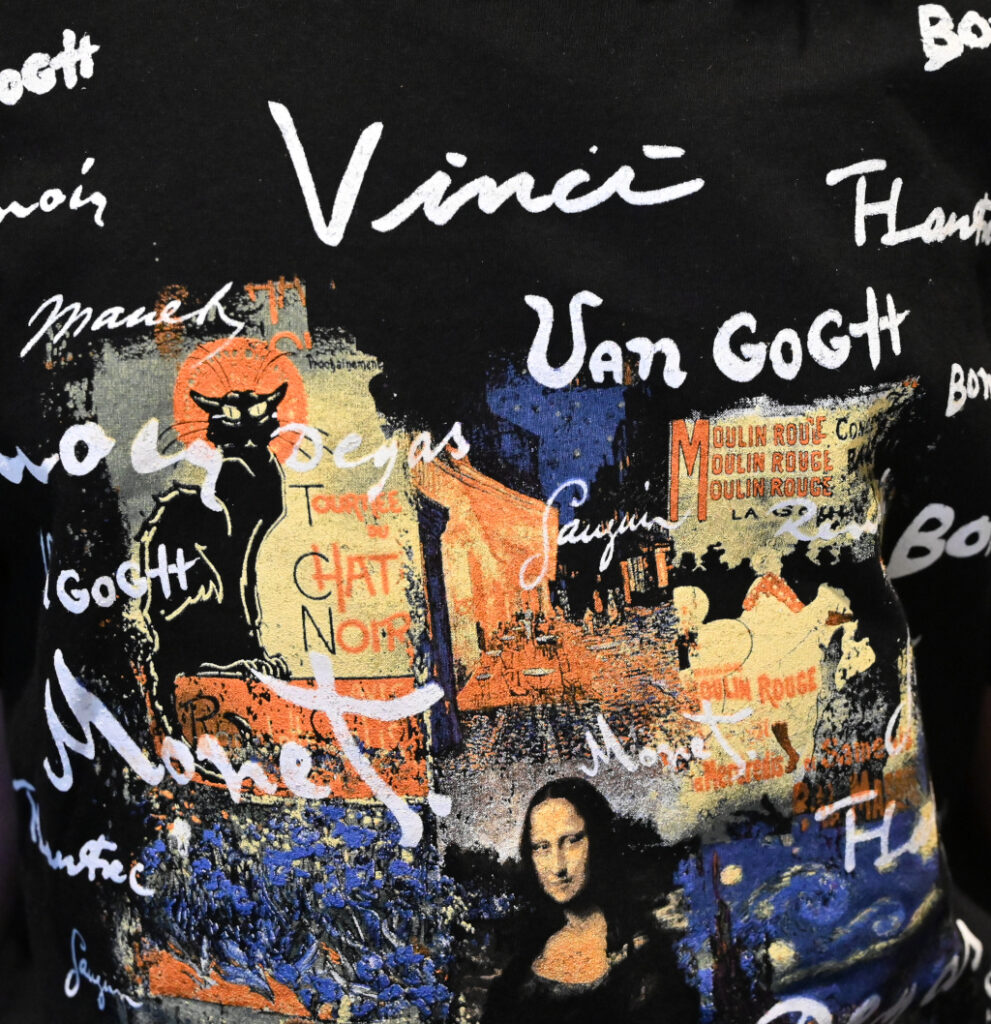
Live is getting harder when you are squeezed together with other achievements of art. Nothing in our world is absolutely immune to inflation of some sort or another, visual grandeur not being an exception. Black cats have also a special flair. Combining both has to be something truly unique. The recipe is simple: Take Le Chat Noir, arrange it with Mona, add a pinch of Van Gogh and Monet (or was it Monét – or even Monêt???) and print it on a shirt. They even took away the wild nature in the background and the sky with this nameless greenish blue. Yes, live is sometimes difficult. But the last laugh will be mine, buddy.
As we get closer to the end of this adventure, the scenes increasingly carry a sense of lunacy. This time the object belongs to Mona exclusively. The imagery is heavily cropped to a perfect circle. This wouldn’t be so terrible on its own. Master Vinci may have liked it, the circle being such a perfect mathematical object. But they drove the spindle for the arms of the clock through her breast. This hurts a little bit. I listened strenuously and I think I heard a whispered grievance: The minute hand skewers my nose once every hour. A dark shadow is cast over Mona’s eyes but nothing will ever – EVER – tarnish her smile.
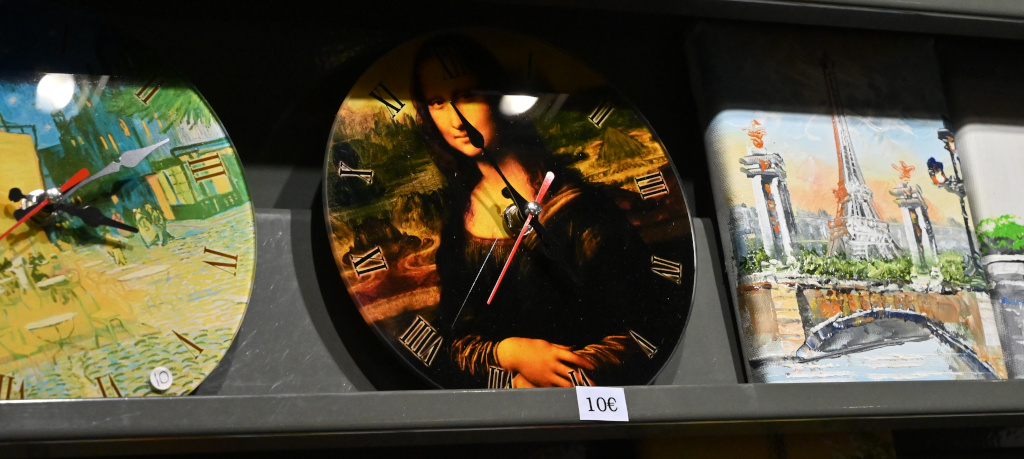



Average Rating